A Study In Scarlet
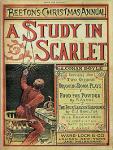
Author:Arthur Conan Doyle
Tag:Arthur Conan DoyleSherlock HolmesBritish
This is a detective mystery novel written by Sir Arthur Conan Doyle, introducing his new character of Sherlock Holmes, who later became one of the most famous literary detective characters. He wrote the story in 1886, and it was published the next year. The book's title derives from a speech given by Holmes to his sidekick Doctor Watson on the nature of his work, in which he describes the story's murder investigation as his "study in scarlet": "There’s the scarlet thread of murder running through the colourless skein of life, and our duty is to unravel it, and isolate it, and expose every inch of it."
The story, and its main character, attracted little public interest when it first appeared. Only 11 complete copies of Beeton's Christmas Annual 1887 are known to exist now and they have considerable value. Although Conan Doyle wrote 56 short stories featuring Holmes, A Study in Scarlet is one of only four full-length novels in the original canon. The novel was followed by The Sign of Four, published in 1890. A Study in Scarlet was the first work of fiction to incorporate the magnifying glass as an investigative tool.
Beyond The City

Author:Arthur Conan Doyle
Tag:Arthur Conan DoyleBeyond The CityBritish
"How deeply are our destinies influenced by the most trifling causes Had the unknown builder who erected and owned these new villas contented himself by simply building each within its own grounds, it is probable that these three small groups of people would have remained hardly conscious of each others existence. But there was a common link to bind them together. And especially to the Admiral and the Doctor were this closer intimacy and companionship of value. Each had a void in his life, as every man must have who with unexhausted strength steps out of the great race, but each by his society might help to fill up that of his neighbor." An altogether different sort of tale from the man who gave the world Sherlock Holmes.
The Hound of the Baskervilles
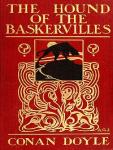
Author:Arthur Conan Doyle
Tag:Arthur Conan DoyleSherlock HolmesBritish
The Hound of the Baskervilles is the third of four crime novels by Sir Arthur Conan Doyle featuring the detective Sherlock Holmes. Originally serialised in The Strand Magazine from August 1901 to April 1902, it is set largely on Dartmoor in Devon in England's West Country and tells the story of an attempted murder inspired by the legend of a fearsome, diabolical hound.
In 2003 the book was listed on the BBC's The Big Read poll of the UK's "best-loved novel."
The Hound of the Baskervilles is the classic detective chiller. The Baskerville family is haunted by a phantom beast which roams the mist-enshrouded wilds of Dartmoor. Now The Hound seems to be stalking the young Sir Henry, new heir to the Baskerville estate. Is this devilish spectre the manifestation of the family curse? Or is Sir Henry the victim of a vile and scheming murderer? Only Sherlock Holmes can solve the mystery.
The Lost World
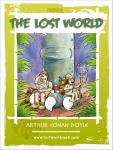
Author:Arthur Conan Doyle
Tag:Arthur Conan DoyleThe Lost WorldBritish
This book is a novel released in 1912 by Sir Arthur Conan Doyle concerning an expedition to a plateau in the Amazon basin of South America where prehistoric animals (dinosaurs and other extinct creatures) still survive.
Edward Malone, a reporter for the Daily Gazette, goes to his news editor, McArdle, to procure a dangerous and adventurous mission in order to impress the woman he loves, Gladys Hungerton. He is sent to interview Professor George Edward Challenger, who has assaulted four or five other journalists, to determine if his claims about his trip to South America are true. After assaulting Malone, Challenger reveals his discovery of dinosaurs in South America. Having been ridiculed for years, he invites Malone on a trip to prove his story, along with Professor Summerlee, another scientist qualified to examine any evidence, and Lord John Roxton, an adventurer who knows the Amazon and several years prior to the events of the book helped end slavery by robber barons in South America. They reach the plateau with the aid of Indian guides, who are superstitiously scared of the area. One of these Indians, Gomez, is the brother of a man that Roxton killed the last time he was in South America. When the expedition manages to get onto the plateau, Gomez destroys their bridge, trapping them. Their "devoted negro" Zambo remains at the base, but is unable to prevent the rest of the Indians from leaving.
Deciding to investigate the lost world, they are attacked by pterodactyls in a swamp, and Roxton finds some blue clay in which he takes a great interest. After exploring the plateau and having some adventures in which the expedition narrowly escapes being killed by dinosaurs, Challenger, Summerlee, and Roxton are captured by a race of ape-men. While in the ape-men's village, they find out that there is also a tribe of humans (calling themselves Accala) inhabiting the other side of the plateau, with whom the ape-men (called Doda by the Accala) are at war. Roxton manages to escape and team up with Malone to mount a rescue. They arrive just in time to prevent the execution of one of the professors and several other humans, who take them to the human tribe. With their help, they defeat the ape-men, taking control of the whole plateau.
After witnessing the power of their guns, the human tribe does not want the expedition to leave, and tries to keep them on the plateau. However the team finally discovers a tunnel that leads to the outside, where they meet up with Zambo and a large rescue party. Upon returning to England, they present their report which include pictures and a newspaper report by Edward, which many dismiss as they had Challenger's original story. Having planned ahead, Challenger shows them a live pterodactyl as proof, which then escapes and flies out into the Atlantic ocean. When the four of them have dinner, Roxton shows them why he was so interested in the blue clay. It contains diamonds, about £200,000 worth, to be split between them. Challenger plans to open a private museum, Summerlee plans to retire and categorize fossils, and Roxton plans to go back to the lost world. Malone returns to his love, Gladys, only to find that she had married a clerk while he was away. With nothing keeping him in London, he volunteers to be part of Roxton's second trip.
The Parasite
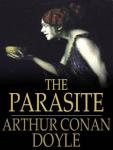
Author:Arthur Conan Doyle
Tag:Arthur Conan DoyleThe ParasiteBritish
The Parasite is a 1894 novelette by Sir Arthur Conan Doyle.
The main character is a young man known as Austin Gilroy. He studies physiology and knows a professor who is studying the occult. The young man is introduced to a middle-aged woman known as Miss Penclosa, who has a crippled leg and psychic powers. She is a friend of the Professor's wife. The skeptical Gilroy's fiancée, Agatha, is put into a trance to prove Miss Penclosa's powers. This succeeds and Gilroy begins to go to the Professor's house where Miss Penclosa practices her powers on him (one of the many things she tells him is that her powers vary with her strength). This is so Gilroy can look at the physical part of the powers.
Miss Penclosa (who has done this before) 'falls in love' with the unfortunate Gilroy. She starts to use her powers on him to make him caress and utter sweet nothings to her. He loses his temper, rejects her love, and she begins to play tricks on him with her powers. The series of cruel tricks ends with him in his Agatha's room carrying a small bottle of sulphuric acid. He notices that it is half-past three. He rushes to Miss Penclosa's home and demands for her presence at the door. The nurse there answers in a frightened tone that she died at half-past three.
The Poison Belt
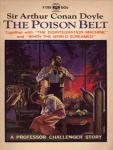
Author:Arthur Conan Doyle
Tag:Arthur Conan DoyleThe Poison BeltBritish
The Poison Belt was the second story, a novella, that Sir Arthur Conan Doyle wrote about Professor Challenger. Written in 1913, roughly a year before the outbreak of World War I, much of it takes place—rather oddly, given that it follows The Lost World, a story set in the jungle—in a room in Challenger's house. This would be the last story written about Challenger until the 1920s, by which time Doyle's spiritualist beliefs had begun to influence his writing.
Challenger sends telegrams asking his three companions from The Lost World - Edward Malone, Lord John Roxton, and Professor Summerlee - to join him at his home outside of London. The cryptic telegrams also instruct each of them to bring a tank of oxygen. When they arrive they are ushered into a sealed room, along with Challenger and his wife. In the course of his research, Challenger has predicted that the Earth is about to come into contact with a belt of poisonous ether, which will, based on its effect on the people of Sumatra earlier in the day, cause the end of humanity. Challenger seals them in the room with the cylinders of oxygen, which he (correctly) believes will counter the effect of the ether. The sealing is not to keep the ether out - it permeates everything - but "to keep the oxygen in".
The five of them wait out the Earth's passage through the band as they watch the world outside die, and machines run amok. (In an interesting display of Victorian values - or, at least, Doyle's take on them - Challenger does not even consider including his servants; they are left outside the room to die, and continue to perform their duties until the ether overtakes them.) Finally, the last of their oxygen cylinders runs dry, and they open a window, ready to face death. To their surprise, they do not die, and they wander through the dead countryside in Challenger's car, eventually making it to London. They encounter only one survivor, who is an elderly, bed-ridden woman prescribed oxygen for her health.
After going to London and back, they make plans for the fate of the world at their hands—when suddenly, people start to wake up again. The effect of the ether turns out to be temporary, and the world wakes up again after a little over a day in a coma, with no knowledge that they have lost any time at all. Eventually Challenger and his companions manage to convince the world what happened - a task made easier by the tremendous amount of death and destruction caused by runaway machines and fires that took place while the world was asleep - and humanity is shocked into placing a higher value on life, and how well we spend what little time we are given.
The Sign of Four
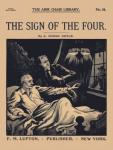
Author:Arthur Conan Doyle
Tag:Arthur Conan DoyleSherlock HolmesBritish
The Sign of the Four (1890), also called The Sign of Four, is the second novel featuring Sherlock Holmes written by Sir Arthur Conan Doyle. Doyle wrote four novels and 56 stories starring the fictional detective.
The story is set in 1888. The Sign of the Four has a complex plot involving service in East India Company, India, the Indian Rebellion of 1857, a stolen treasure, and a secret pact among four convicts ("the Four" of the title) and two corrupt prison guards. It presents the detective's drug habit and humanizes him in a way that had not been done in A Study in Scarlet. It also introduces Doctor Watson's future wife, Mary Morstan.
The Vital Message
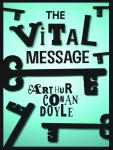
Author:Arthur Conan Doyle
Tag:Arthur Conan DoyleThe Vital MessageBritish
The Vital Message was written by Arthur Conan Doyle. It was first Published in the United States by the H. Duran Company of New York in 1919.
In "The New Revelation" the first dawn of the coming change has been described. In "The Vital Message" the sun has risen higher, and one sees more clearly and broadly what our new relations with the Unseen may be. As I look into the future of the human race I am reminded of how once, from amid the bleak chaos of rock and snow at the head of an Alpine pass, I looked down upon the far stretching view of Lombardy, shimmering in the sunshine and extending in one splendid panorama of blue lakes and green rolling hills until it melted into the golden haze which draped the far horizon. Such a promised land is at our very feet which, when we attain it, will make our present civilisation seem barren and uncouth. Already our vanguard is well over the pass. Nothing can now prevent us from reaching that wonderful land which stretches so clearly before those eyes which are opened to see it. That stimulating writer, V. C. Desertis, has remarked that the Second Coming, which has always been timed to follow Armageddon, may be fulfilled not by a descent of the spiritual to us, but by the ascent of our material plane to the spiritual, and the blending of the two phases of existence. It is, at least, a fascinating speculation. But without so complete an overthrow of the partition walls as this would imply we know enough already to assure ourselves of such a close approximation as will surely deeply modify all our views of science, of religion and of life. What form these changes may take and what the evidence is upon which they will be founded are briefly set forth in this volume." - Sir Arthur Conan Doyle
The White Company
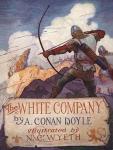
Author:Arthur Conan Doyle
Tag:Arthur Conan DoyleThe White CompanyBritish
The White Company is a historical adventure by Arthur Conan Doyle set during the Hundred Years' War.[1] The story is set in England, France, and Spain, in the years 1366 and 1367, against the background of the campaign of Edward, the Black Prince to restore Peter of Castile to the throne of the Kingdom of Castile. The climax of the book occurs before the Battle of Nájera.
At the age of twenty, the young Alleyne, son of Edric, intelligent, skilled, and well-liked, though sheltered and naive, leaves the Catholic abbey where he has been raised and goes out to see the world, in accordance with the terms of his father's will. The same day, the abbot banishes John of Hordle, for worldly behavior: great appetite, teasing, and flirting. At the Pied Merlin inn, they make friends with veteran archer Sam Aylward. He has returned to England from France to recruit for the White Company of mercenaries, and brings an request for Sir Nigel Loring of Christchurch to take command. Aylward and John continue to Christchurch, while Alleyne detours to visit his older brother, the "socman" or landlord of Minstead, whose fierce reputation has grown to wickedness.
As the brothers meet for the first time since Alleyne was an infant, the socman is threatening a lovely maiden, and still furious their father gave three hides of land (80–120 acres) to the monastery for the boy's support. Maude escapes the socman with Alleyne's aid, and they flee on foot to find her squire and horse. Maude makes a striking impression on the abbey-raised young man, and she laughs when Alleyne states that his intention to rejoin his friends will lead to Sir Nigel Loring. Alleyne meets up again with Aylward and Hordle John, and the three friends meet Sir Nigel and his formidable wife Mary. Alleyne is taken on as squire to Sir Nigel and and tutor to his daughter, who Alleyne discovers is the same Maude he saved from his evil brother. When the men eventually depart for France, the young couple admit their love, but only to each other. En route to Gascony, our heroes destroy pirates, then report to the court of the Prince of Wales in Bordeaux.
After adventures fearful and funny, the valiant fighters lead the White Company to join the Prince. The Spanish and French attack them in a narrow ravine, where the mighty warriors are almost all destroyed and the Company must disband. John and Alleyne, badly wounded, survive, but Sir Nigel and Aylward are missing and presumed dead. The English go on to win the Battle of Nájera, fulfilling the mission. The Prince knights Alleyne in his sick bed, and the former socman has died. Sir Alleyne Edricson, new socman, returns victorious, John his squire, to snatch Maude from the doors of the nunnery, for marriage. En route back to rescue their friends, all reunite for a happy ever after.